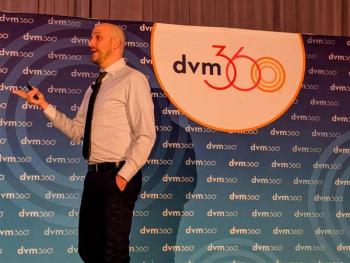
Musculoskeletal system: Why is this 18-month-old dog limping? (Proceedings)
Disease processes are categorized into Congenital, Degenerative, Developmental Inflammatory, Metabolic, Neoplastic, Traumatic and Miscellaneous processes.
General Comments
• Disease processes are categorized into Congenital, Degenerative, Developmental Inflammatory, Metabolic, Neoplastic, Traumatic and Miscellaneous processes.
• Young animals are usually affected by Congenital, Developmental, Inflammatory, Metabolic and Traumatic processes.
• Older animals are usually affected by Degenerative, Inflammatory, Metabolic and Neoplastic processes.
• Neoplasia may be seen in the young and trauma may be seen in the old; thus age is not an exclusive predicting factor.
• When evaluating the osseous system, it is advantageous to: 1)center the beam on the area of interest, 2) use high detail film/screen technology—100 speed system or the appropriate digital algorithm 3) use table top technique unless the part is greater than 10 cm in thickness—then use a grid/bucky-some digital systems do not use a grid, 4) remove patient motion artifact, 5) use as many radiographic projections as needed to define the structures/lesions in the area of interest, 6) remove superimposition of unnecessary structures as much as possible, and 7) obtain sequential radiographic studies as clinically indicated to monitor the biological behavior of the lesion/lesions.
• Things to remember: 1) many osseous lesions are not defined radiographically when the animal initially presents—the tissues have not been altered sufficiently to be detected radiographically, 2) soft tissues should always be evaluated i.e. is there joint distention, alteration in opacity of the soft tissues, mass lesions in the cranial mediastinum or pelvic canal/sublumbar region?, 3) is there systemic disease such as renal failure, myasthenia gravis, Addison's disease, auto-immune disease, cardiovascular disease? and 4) is there a central nervous system component-"root signature", cauda equine, brachial plexus mass to the altered gait?.
• Radiographs I receive with requested interpretation of osseous/articular disease usually involve:
• Congenital malformation of joints—especially chondrodystrophoid breeds
• Osteochondrosis and osteochondritis dissecans-especially in large and giant breed dogs
• "Dysplasia"—elbow and hip-especially in large and giant breed dogs
• Trauma-any breed-usually young pets but not exclusively
• Panosteitis-usually in male German Shepherd and Bassett Hounds
• Osteosarcoma –Usually in the proximal humerus, distal radius, proximal and distal femur and tibia of large and giant breed dogs.
• Avascular necrosis-usually in the femoral head of toy breed dogs
• Immune mediate disease-usually in the Shetland sheepdog
• Cranial cruciate disease-any breed dog-often in young Rottweiler dogs.
• My presentation will review the above conditions. The audience will be asked to participate in the presentation so that it will be a discussion rather than a monolog.
Newsletter
From exam room tips to practice management insights, get trusted veterinary news delivered straight to your inbox—subscribe to dvm360.




